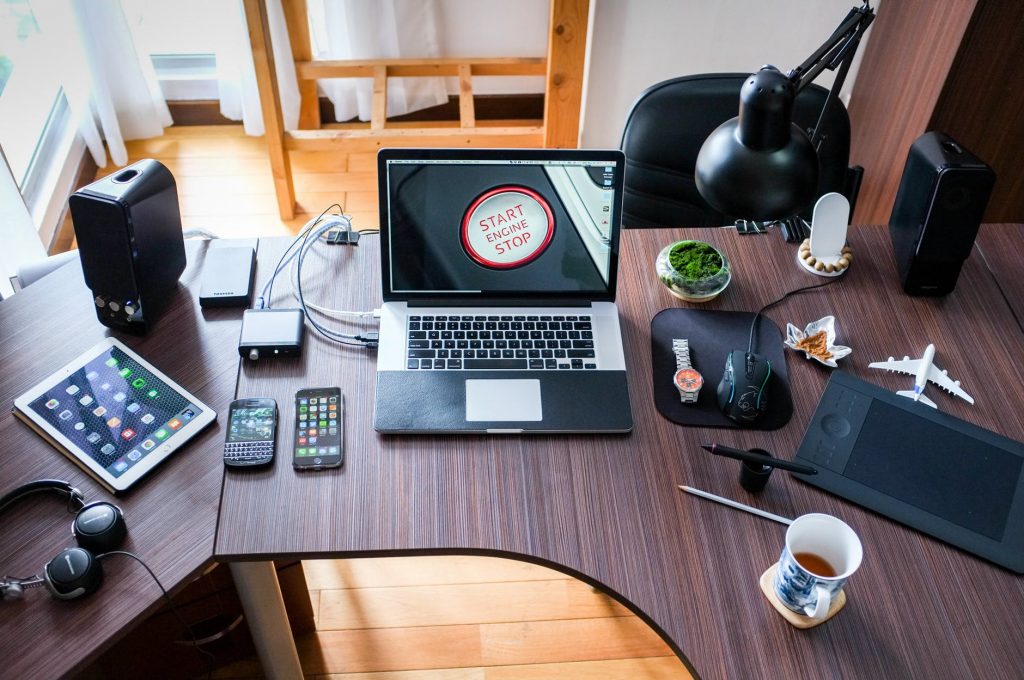Last thursday, Chief Minister Andrew Barr announced that, due to the Covid-19 crisis, Australian Public Service departments will be making the shift to working from home (WFH). In anticipation, contentgroup has been moving to WFH over the past week.
As time goes on, we will hold our regular staff ‘lunch ‘n’ learn’ sessions by webinar, and consult industry and APS experts about this new way of working via podcast interviews – indeed, listen to our APS brains-trust series ‘Work With Purpose’. Get in touch if you would like us to help you do the same.
For now, we would like to share with you our experience of working from home, in the hope that it provides helpful insight for those making the shift now.
Accessing your Server and Files
Having a virtual private network (VPN) is the most secure way to access your department’s server. However, VPNs are notoriously tricky, often denying access for no apparent reason. So, it is really important to ensure you can access yours from home before you shift to home-working. Bring home your laptop and test the VPN. Now.
At contentgroup, we save each document with the filename date-first (that is, [year][month][day][filename]). This ensures version control between multiple collaborators, as well as being a great way to track the development of projects and having an organised and uniformed filing system.
If your VPN is being problematic, SharePoint – a team sharing and collaboration software tool provided by Office 365, commonly used in the APS – is a good option whilst working remotely. However, you will need to ensure that you’re using it correctly, to ensure document version control . Ask your IT department for guidance.
Meetings
Over the past year or so, the world has become Zoom obsessed. Zoom is a simple and free videoconferencing platform that allows you to connect remotely with team members, clients and partners. This platform has a host of useful functions, such recording meetings and sharing screens. You can even mute your microphone so no one else can hear your dog barking or use only audio instead of video to mitigate connectivity issues or bad hair days.
A Zoom meeting is joined via a shared link and can host up to 100 people. The platform also has an online-support team to assist you with any technological troubles.
At contentgroup we use Zoom to hold our daily morning team ‘Huddle’, and to host project team meetings, virtual ‘lunch dates’, and catch-ups with clients. This capacity to have virtual face-to-face meetings has been incredibly valuable during this uneasy time.
Internal Communications
At contentgroup, as communicators do, we use different communications channels for different purposes to reach different audiences.
We like to keep email for project-related external communications with clients and have opted to use platforms Asana and Microsoft Teams as our key internal communication channels. Otherwise, there would be the danger that tasks, and important conversations could get lost in a crowded inbox.
And then there’s the spectre that any given team member could fall ill and need to take time off. The combination of Asana and Teams enables other contentgroupies to jump in, to get across the contexts to projects and to do what needs to be done to meet project deadlines to our usual high standard.
contentgroup uses Asana for project management, as it keeps all project-related information in one easily accessible place. It enables us to stay in synch, hit deadlines, and reach our goals. This platform allows the project manager to assign tasks, record deadlines, link conversations, tag team members, and keep up to date with project progress.
For more logistics-based internal communications, contentgroup uses Microsoft Teams. This platform allows us to chat, call, meet, and collaborate from anywhere. At contentgroup we primarily use this platform for quick internal chats about services and projects, outline our tasks for the day, and organise the logistics of team meetings. A feature within Microsoft Teams that is really useful is ‘channels’. You can create and organise different channels (think of them as chats), so that all matters relating to an issue can be posted and found in one place. We use this to flag issues with say, the VPN, or when we’re starting for the day, going on lunch, finishing up, or looking to organise a Friday end-of-week beer via Zoom – very handy!
During this time, we hope these insights are useful to everyone moving to working remotely. Whilst this shift can take time to adjust to, these kinds of platforms, processes and routines can make life just that little bit easier.
